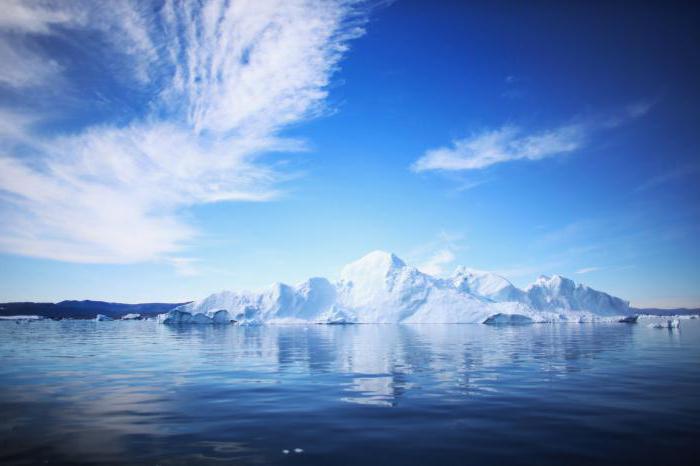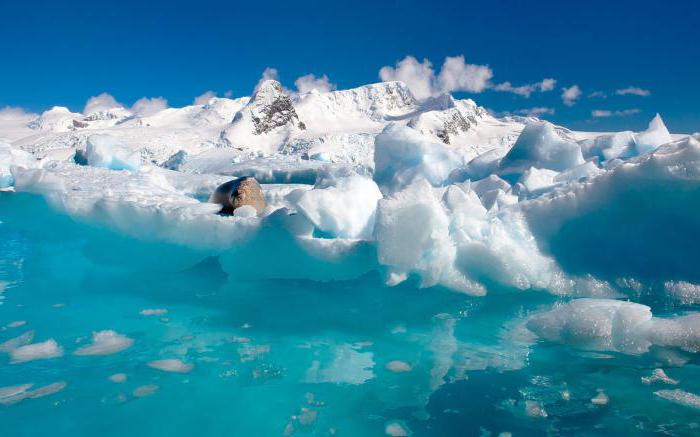Education
What continents is washed by the Arctic Ocean? Its features
March 24, 2016This ocean is recognized as the smallest in area and depth. It is located in the central part of the Arctic. Its location is the key to answering the question of which continents are washed by the Arctic Ocean. Its second name is Polar, and the waters reach the shores of the North American and Eurasian continents.
Characterization of ocean conditions
The area occupied by the Arctic Ocean is small, and it does not obstruct the appearance of a large number of islands in the basin. And these are not small rocks that come out to the surface, but continental archipelagos of a large area (Novaya Zemlya, Spitsbergen, Greenland, etc.).
The continents washed by the Arctic Ocean are the northernmost on the planet. The cold waters are partly warmed by warm currents that flow from the Atlantic, bypassing northern Europe. A slightly warmed current flows from the Pacific Ocean, passing through the Bering Strait. It also has a certain effect on the circulation of warm air masses. In winter, the ocean is enclosed by a thick ice crust, the temperature usually does not rise above -40 ºC.
What continents is washed by the Arctic Ocean?
While exploring the watery shell of the Earth, one cannot miss the space that connects the two continents. The polar ocean is limited by the following continents: Eurasia and North America. Access to other oceans occurs through the straits between the continents.
The main part of the water area consists of seas, most of which are marginal and only one is inland. Many islands are located near the continents. The Arctic Ocean washes the continents, the shores of which are located beyond the Arctic Circle. Its waters are located in the harsh arctic climatic zone.

Related Videos
Ocean climate
In geography lessons, schoolchildren are explained which continents are washed by the Arctic Ocean, and what are its climatic features. Arctic air is much warmer than Antarctic air. Because the polar waters receive heat from the adjacent oceans. Interaction with the latter is less active. As a result, it turns out that the Northern Hemisphere is "warmed up" by the Arctic Ocean.
The impact of air currents from the west and southwest led to the formation of the North Atlantic Current. Water masses are transported parallel to the coast of the Eurasian continent in an easterly direction. They are met by streams passing through the Bering Strait, from the Pacific Ocean.
A well-known natural feature of these latitudes is the presence of an ice crust on the waters. The polar ocean washes the shores of the continents of the northern hemisphere, where low temperatures prevail in the Arctic Circle. Ice coverage also occurs due to the low concentration of salts in the surface layer of water. The reason for the desalination is the abundant river runoff from the continents.

Economic use
What continents is washed by the Arctic Ocean? North America and Eurasia. However, it is of more economic importance for countries that have access to it. The harsh local climate hinders the search for deposits of natural resources. But, despite this, scientists managed to prospect for hydrocarbon deposits in the shelf of some northern seas, as well as off the coast of Canada and Alaska.
The fauna and flora of the ocean are not rich. Fishing and algae hunting and seal hunting are carried out near the Atlantic. Whaling vessels operate within tight quotas. The Northern Sea Route (NSR) began to be developed only in the XX century. Through it, ships can get from Europe to the Far East much faster. Its role is great in the development of the Siberian region. Forest resources and ore are transported by sea from there, and products and equipment are delivered to the region.
The duration of navigation is 2-4 months a year. Icebreakers are helping to extend this period in some areas. The work of the NSR in the Russian Federation is provided by various services: polar aviation, a complex of stations for observing the weather.

Study history
What continents is washed by the Arctic Ocean? What are the weather and environmental conditions in the Arctic Circle? Polar researchers were looking for answers to these and many questions. The first sea trips were made on wooden boats. People hunted, fished, studied the peculiarities of northern navigation.
Western sailors in the polar ocean tried to scout a short route from Europe to India and China. The expedition, which began in 1733 and lasted a decade, made a great contribution. The feat of scientists and navigators cannot be underestimated: they mapped the outlines of the coastline from Pechora to the Bering Strait. Information on flora, fauna and weather conditions was collected at the end of the 19th century. In the first half of the next century, a passage across the ocean was made during one navigation. The sailors made measurements of depths, the thickness of the ice crust and meteorological observations.




